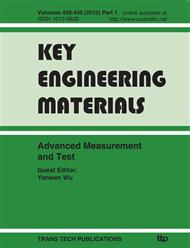p.475
p.481
p.486
p.493
p.499
p.505
p.510
p.516
p.522
Application of Variation Coefficient Method and TOPSIS Model on Urban Environmental Quality Assessment
Abstract:
Urban environmental quality assessment is an important part of urbanization, it is also an important basis for establishing environmental protection policies and improving the quality of the environment. This paper has established a integrative index system for urban environment quality evaluation, it takes four cities for example, and uses variation coefficient method to give each index an objective weight, then it uses TOPSIS model to evaluate their environmental quality. This model calculates the corresponding close-degrees between these citis and the ideal point, and arrays them according to the corresponding close-degrees. A case study proves the reliability and practicality of this model, it provides a strong support and basis for China's urban environmental quality evaluation.
Info:
Periodical:
Pages:
499-504
Citation:
Online since:
June 2010
Authors:
Price:
Сopyright:
© 2010 Trans Tech Publications Ltd. All Rights Reserved
Share:
Citation:


